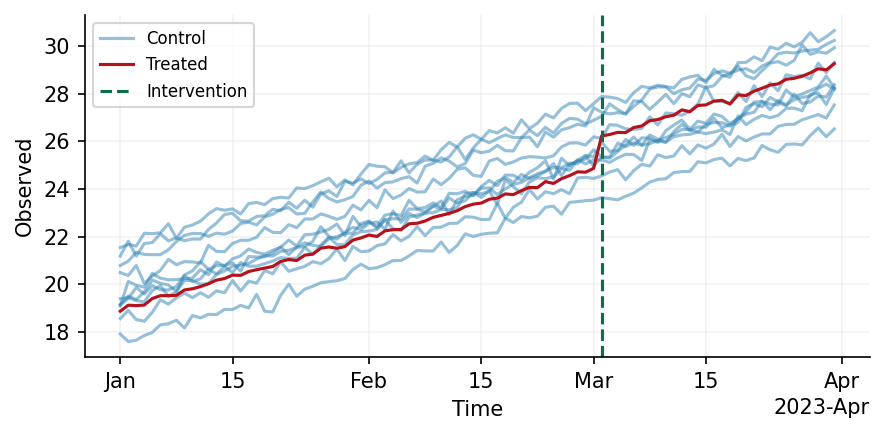
Research
Malicious npm Packages Impersonate Flashbots SDKs, Targeting Ethereum Wallet Credentials
Four npm packages disguised as cryptographic tools steal developer credentials and send them to attacker-controlled Telegram infrastructure.
This package provides functionality to define your own causal data generation process and then simulate data from the process. Within the package, there is functionality to include complex components to your process, such as periodic and temporal trends, and all of these operations are fully composable with one another.
A short example is given below
from causal_validation import Config, simulate
from causal_validation.effects import StaticEffect
from causal_validation.plotters import plot
from causal_validation.transforms import Trend, Periodic
from causal_validation.transforms.parameter import UnitVaryingParameter
from scipy.stats import norm
cfg = Config(
n_control_units=10,
n_pre_intervention_timepoints=60,
n_post_intervention_timepoints=30,
)
# Simulate the base observation
base_data = simulate(cfg)
# Apply a linear trend with unit-varying intercept
intercept = UnitVaryingParameter(sampling_dist = norm(0, 1))
trend_component = Trend(degree=1, coefficient=0.1, intercept=intercept)
trended_data = trend_component(base_data)
# Simulate a 5% lift in the treated unit's post-intervention data
effect = StaticEffect(0.05)
inflated_data = effect(trended_data)
# Plot your data
plot(inflated_data)

To supplement the above example, we have two more detailed notebooks which exhaustively present and explain the functionalty in this package, along with how the generated data may be integrated with AZCausal.
In this section we guide the user through the installation of this package. We distinguish here between users of the package who seek to define their own data generating processes, and developers who wish to extend the existing functionality of the package.
To install the latest stable version, run
pip install causal-validation
in your terminal.
git clone git@github.com:amazon-science/causal-validation.gitcd causal-validationpip install -e .For Usershatch env createhatch shellhatch run dev:testFAQs
A validation framework for causal models.
We found that causal-validation demonstrated a healthy version release cadence and project activity because the last version was released less than a year ago. It has 1 open source maintainer collaborating on the project.
Did you know?

Socket for GitHub automatically highlights issues in each pull request and monitors the health of all your open source dependencies. Discover the contents of your packages and block harmful activity before you install or update your dependencies.

Research
Four npm packages disguised as cryptographic tools steal developer credentials and send them to attacker-controlled Telegram infrastructure.

Security News
Ruby maintainers from Bundler and rbenv teams are building rv to bring Python uv's speed and unified tooling approach to Ruby development.

Security News
Following last week’s supply chain attack, Nx published findings on the GitHub Actions exploit and moved npm publishing to Trusted Publishers.